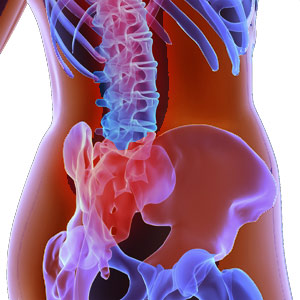Endothelial Dysfunction

Constant and increasing damage of the endothelium is defined as endothelial dysfunction. Endothelium is the thin layer of flat smooth cells that line the inner walls of blood vessels (veins and arteries). These cells allow blood to flow smoothly within the blood vessels.
When the endothelial cells get affected, the walls of the arteries tend to lose their elasticity thereby becoming hard and thick. This in turn reduces the supply of blood to the tissues.
Endothelium function
When at any time the endothelium fails to function as it should; it is called endothelial dysfunction. Medically endothelial dysfunction can be defined as an imbalance between vasodilating and vasoconstricting substances produced by the endothelium or acting on the endothelium. The main feature of endothelial dysfunction is impaired NO (nitric oxide) bio availability and bio activity. Apart from NO deficiency, this condition forces the endothelium to host unwanted substances and mediators that are detrimental to the arterial wall.
The endothelium is responsible for coagulation, immune function, platelet adhesion, control of volume and electrolyte content of the intravascular and extra vascular spaces. All these functions remain normal when the endothelium is functioning well. When endothelial dysfunction happens, all the above mentioned functions do not happen. With the onset of endothelial dysfunction, the veins and arteries do not dilate properly. Such problems are considered to be signs for onset of atherosclerosis.
Endothelial dysfunction
Endothelial dysfunction can have a major influence during the early stages of atherosclerosis and also during the developmental stages. Recently the medical community has accepted that endothelial dysfunction is the initial clinically-detectable indication of heart disease.
Therefore patients suffering from endothelial dysfunction are susceptible to clinical cardiovascular events like myocardial infarction. Endothelial dysfunction is also considered as an important occurrence in the development of micro vascular complications in diabetes.
Endothelial dysfunction is seen in a variety of pathological conditions apart from atherosclerosis. The list includes hypertension, heart failure, cigarette smoking, hypercholesterolemia, diabetes, aging etc. Endothelial dysfunction affects almost 50% of those over the age of 40. Women are highly prone to this condition. The good news is that endothelial dysfunction can be reversed.
- Cigarette smoking
- High blood pressure
- Diabetes
- High cholesterol levels
- Obesity
- Menopause
- Oxidative stress
Endothelial dysfunction tests
There are different techniques to evaluate the endothelium functional capacity. The results depend on the amount of NO produced and the vasodilatation effect. The percentage of vasodilatation with respect to the basal value represents the endothelial functional capacity.
Tests to measure the endothelial function
The transient flow-modulate endothelium-dependent post-ischemic vasodilatation: This test is performed on conductance arteries. This vasodilatation value is compared with the vasodilatation produced by drugs like nitroglycerine (NO donor drugs). The vasodilatation is quantified by measuring the arterial diameter with high resolution ultrasonography. Of late Laser-Doppler techniques are also being used.
Endothelial dysfunction test: A wire is threaded through a catheter that is inserted in one of the coronary arteries. Medication is injected into the artery, this allows the small vessels in the heart to open and let blood rush through. This blood flow through the vessels is measured. This is an invasive test.
Endo PAT (Endothelial Peripheral Arterial Tone) test: This is an innovative and unique technology used in the diagnosis of endothelial dysfunction. It is a noninvasive test that uses bio-sensors placed on the index fingers to check the functioning of the endothelium.
Endothelial dysfunction warning signals
- Tight chest
- Chest pain while exerting
- Breathing difficulty
- Excessive sweating
- Nausea
- Giddiness
- Weakness
Reversing endothelial dysfunction
Endothelial dysfunction can be reversed if the patient follows a healthy lifestyle. Reversing this disease can help prevent serious cardiovascular health problems. Following these simple yet effective suggestions will help reverse endothelial dysfunction.
- Follow a healthy diet. Cut down on trans-fats and limit saturated fats.
- Consume a diet rich in antioxidants as antioxidants help combat the free radicals in our body (excess free radicals in the body can damage the DNA and other essential cells).
- Consume fresh fruits and vegetables, vegetables like artichokes, red beans, blueberries, tomatoes, asparagus, etc that are rich in antioxidants.
- Consume green tea and coffee as they are rich in antioxidants.
- Exercise regularly.
- Maintain a healthy and ideal body weight.
- Monitor blood sugar, blood pressure and cholesterol and keep them under control.
Treatment for endothelial dysfunction
- Medications to control hypertension, diabetes, cholesterol (if the patient suffers from any of the above mentioned conditions)
- Following a healthy life style
- Following steps as suggested in reversing endothelial dysfunction
Endothelial dysfunction diabetes
Diabetes mellitus is always linked with an increased risk of cardiovascular disease. People with good glycemic control are also prone to cardiovascular diseases. Clinical and experimental studies point out that diabetes and insulin resistance can cause a combination of endothelial dysfunction. Endothelium-dependent vasodilation remains impaired in patients with diabetes.
The link between diabetes and cardiovascular disease is not fully understood but it is accepted that the endothelium plays a major role in the pathogenesis of diabetic vascular complications. It is also proved that vasodilation activated by the endothelium-derived nitric oxide (NO is a primary factor involved in the anti atherosclerotic properties of the endothelium) is impaired in patients with diabetes.
Therefore, the origins of diabetic vascular disease can be linked to the reduced bioavailability of endothelium-derived NO. Control of hyperglycemia is thought of as the best way to improve endothelial function and to prevent atherosclerosis and other cardiovascular complications.
Hyperglycemia-induced endothelial dysfunction may result from decreased production of NO or inactivation of NO, etc. In patients with type-2 diabetes, insulin resistance and endothelial dysfunction are precursors for hyperglycemia.
Microalbuminuria is also considered an atherosclerotic risk factor that can be indicative of future cardiovascular disease risk in diabetic patients.
Endothelial dysfunction cardiovascular disease
Reduced vasodilating response towards endothelial stimuli causes endothelial dysfunction. This has been associated with major cardiovascular risk factors such as smoking, aging, diabetes, hypertension, hypercholesterolemia etc.
Cardiovascular risk factors are responsible for oxidative stress - that which changes the functioning capacity of the endothelial cells and leads to endothelial dysfunction. The capacity to maintain homeostasis is reduced and this leads to the development of pathological inflammatory processes and cardiovascular diseases.
Endothelial dysfunction is associated with most cardiovascular diseases, particularly coronary artery disease, which can lead to a heart attack. Endothelial dysfunction is considered to be an early indicator of coronary artery disease as it usually precedes the actual condition even before any signs or symptoms appear. In fact, many studies in the cardiovascular field point out that endothelial dysfunction is the clinical manifestation of cardiovascular disease.
Top of the Page: Endothelial Dysfunction
Tags:#endothelial dysfunction #endothelial dysfunction diabetes #endothelial dysfunction cardiovascular disease
Women's Heart Attack Symptoms
Women Heart Disease Statistics
Heart Disease Risk Calculator
Reverse Heart Disease
Ischemic Heart Disease
Framingham Heart Study Risk
Hypertension Primary Pulmonary
Low Blood Pressure High Pulse
Managing High Blood Pressure
Cholesterol Levels for Women
Endothelial Dysfunction
Other health topics in TargetWoman Women Health section:
General Women Health

Women Health Tips - Women Health - key to understanding your health ...
Cardiac Care
Women's Heart Attack Symptoms - Identify heart problems...
Skin Diseases
Stress Hives - Red itchy spots ...
Women Disorders
Endocrine Disorder - Play a key role in overall wellbeing ...
Women's Reproductive Health
Testosterone Cream for Women - Hormone replacement option ...
Pregnancy
Pregnancy - Regulate your lifestyle to accommodate the needs of pregnancy ...
Head and Face
Sinus Infection - Nearly 1 of every 7 Americans suffer from ....
Women and Bone Care

Slipped Disc - Prevent injury, reduce pain ...
Menstrual Disorders
Enlarged Uterus - Uterus larger than normal size ...
Female Urinary Problems
Bladder Problems in Women - Treatable and curable ...
Gastrointestinal Disorders
Causes of Stomach Ulcers - Burning feeling in the gut ...
Respiratory Disorders
Lung function Test - How well do you breathe ...
Sleep Management

Insomnia and Weight Gain - Sleep it off ...
Psychological Disorders in Women
Mood swings and women - Not going crazy ...
Supplements for Women
Women's Vitamins - Wellness needs...
Natural Remedies

Natural Diuretic - Flush out toxins ...
Alternative Therapy
Acupuncture Point - Feel the pins and needles ...
Top of the Page: Endothelial Dysfunction
Popularity Index: 100,899

